You’d be forgiven if you’ve never heard of Caodaism. The religion is relatively young. According to the pamphlet we received, in 1921 Ngo Van Chieu, a district head of the French administration in Cochinchina, became the first disciple when he received revelations from Duc Cao Dai and a vision of the Divine Eye. The Divine Eye has become the symbol for Duc Cao Dai and represents the spiritual heart, the rays emanating from the left eye are the light of the universe. This symbol is at the altar of any Cao Dai temple.
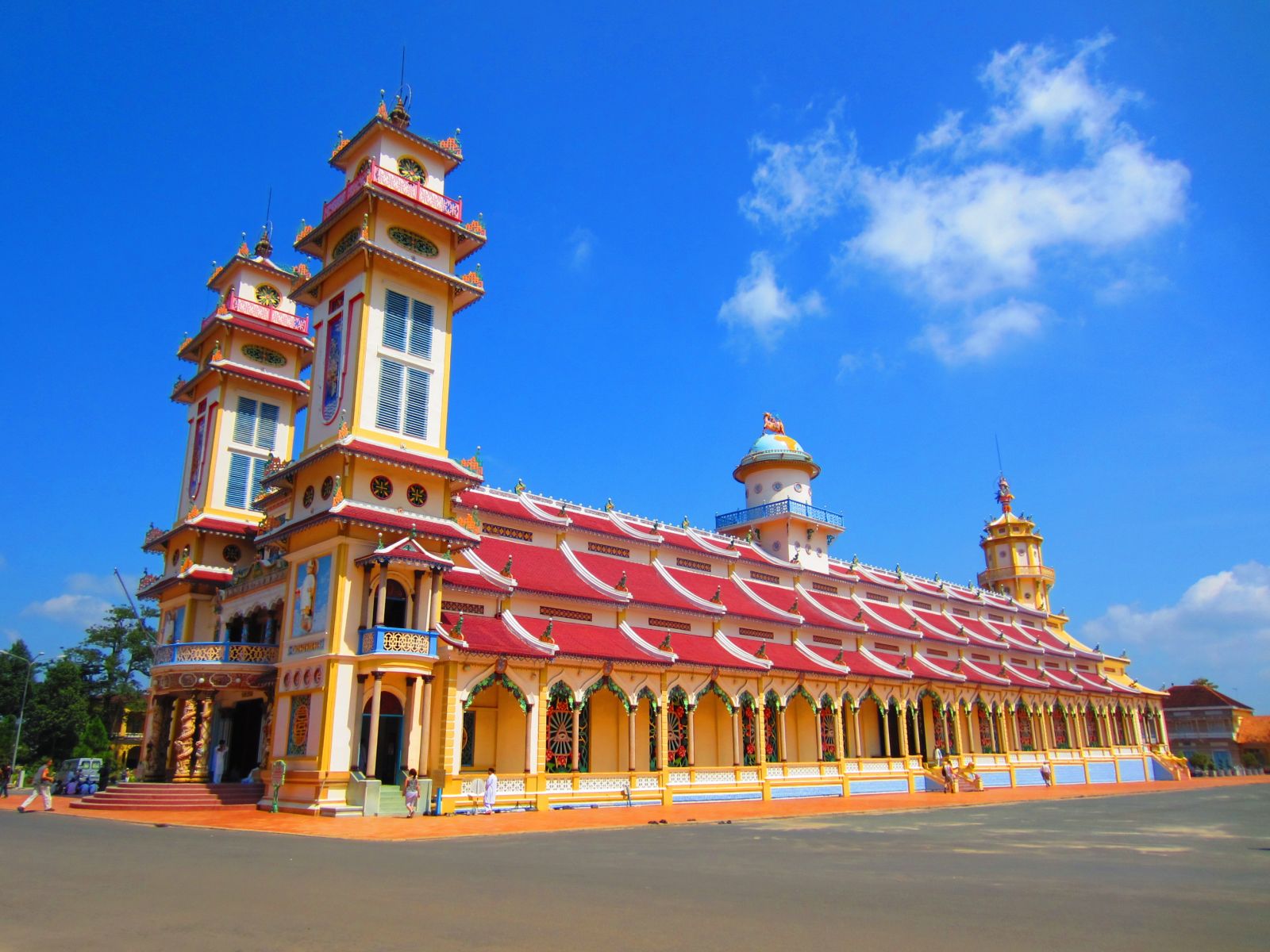
It is estimated there are now 5 million followers worldwide and Caodaism is Vietnam’s third largest religion, though it is dwarfed by Buddhism and Catholicism.
The Cao Dai beliefs are a mix of Buddhism, Confucianism and Taoism. The practices laid out in its revelations are decidedly non-violent—frequent prayer, non-violence, vegetarianism and harmony between all religions are tenets.
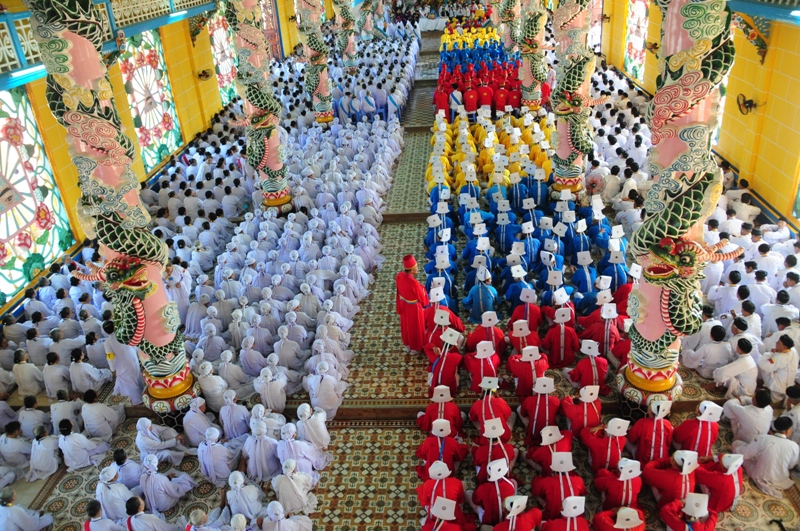
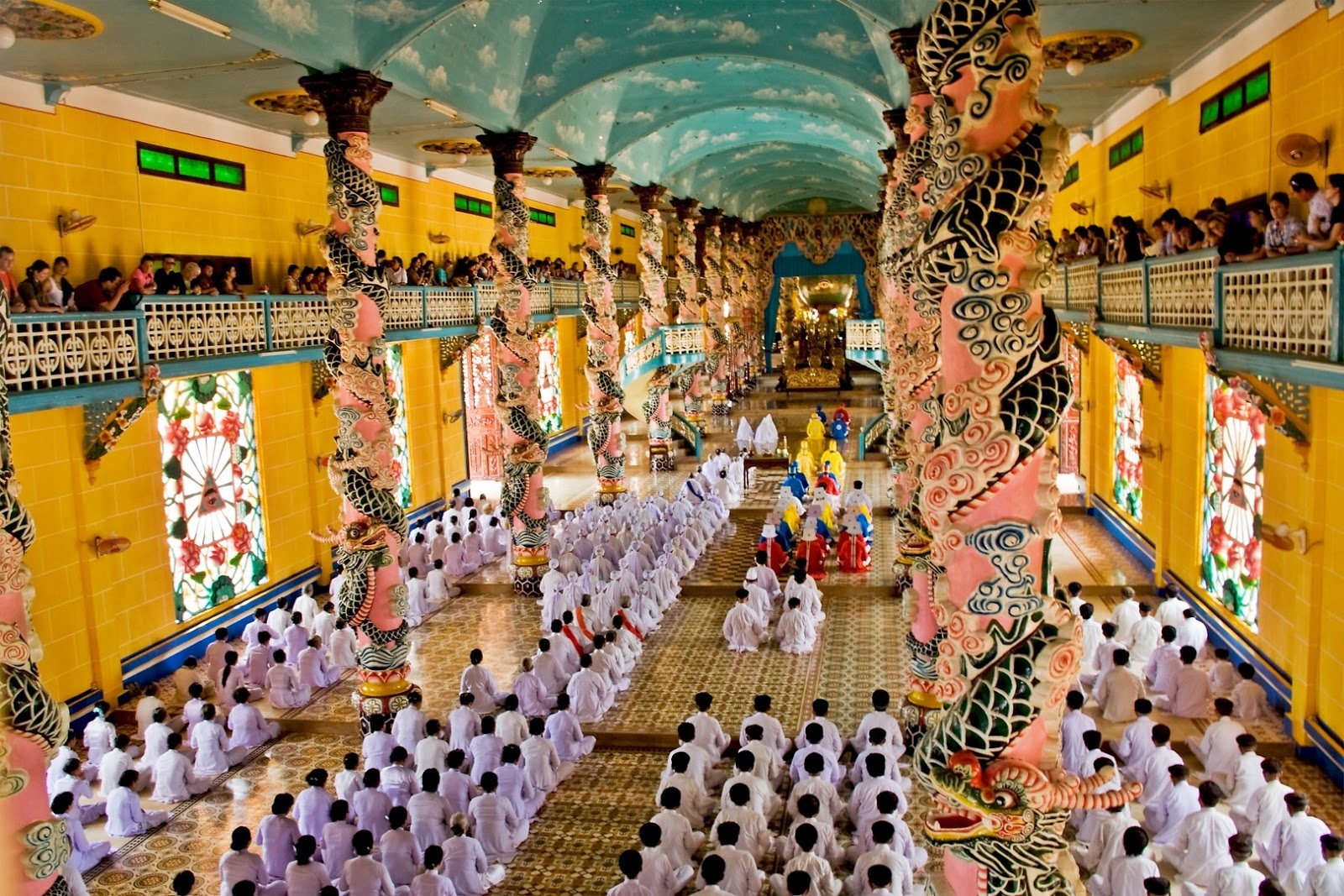
Just as the religion is a fusion of religions, the great temple is a meld of styles, religious motifs and influences. You really have to see the place to believe it: the riot of pink and baby blues, the interior bedecked with a cloudy pastel sky and eight grandiose pillars wrapped with dragons. The faith has built temples all over the Mekong Delta (you can see one in Ho Chi Minh City’s Chinatown), but this is the biggest, brightest and best.
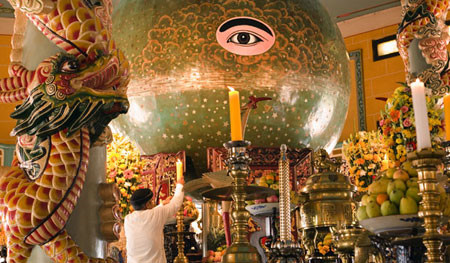
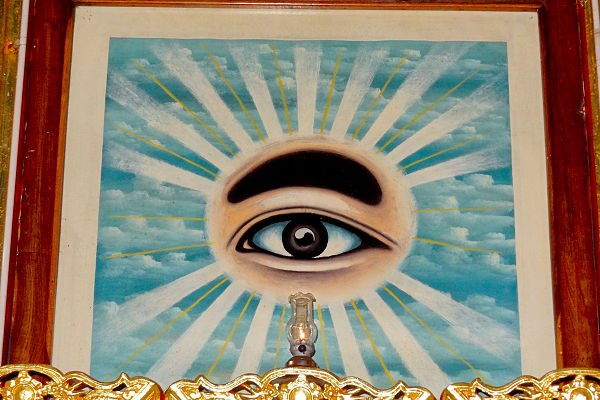
The temple and its worship ceremonies (four a day: 06:00, 12:00, 18:00 and midnight) are now an attraction for tourists, usually as part of a day trip from Ho Chi Minh City that combines it with Cu Chi Tunnels; they both lie northwest of the city. Tours depart around 08:00 and after the unavoidable stop at the lacquerware factory, arrive to the temple in time for the … please log in to read the rest of this story.

According to VietKings (Kyluc.vn)











